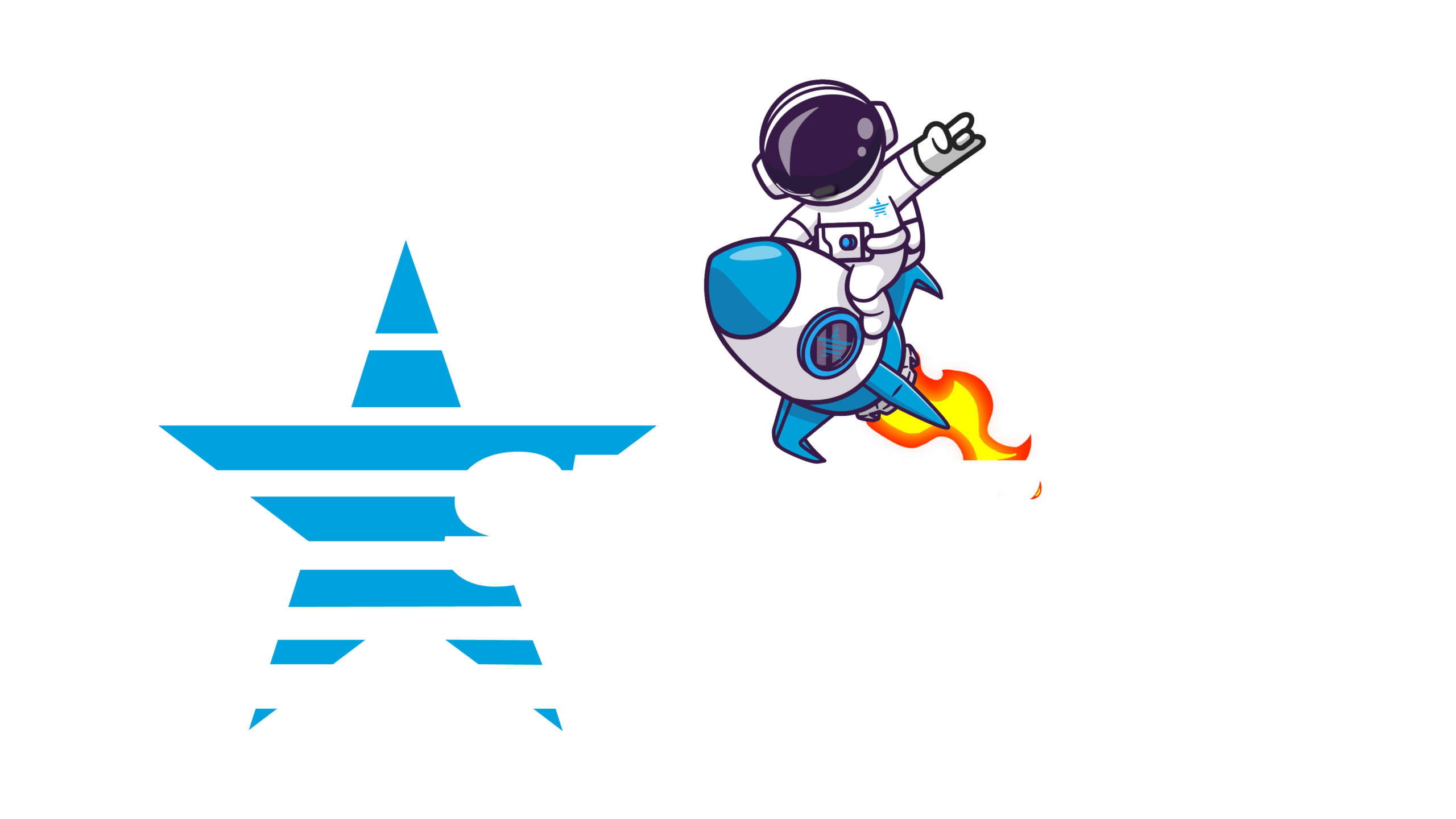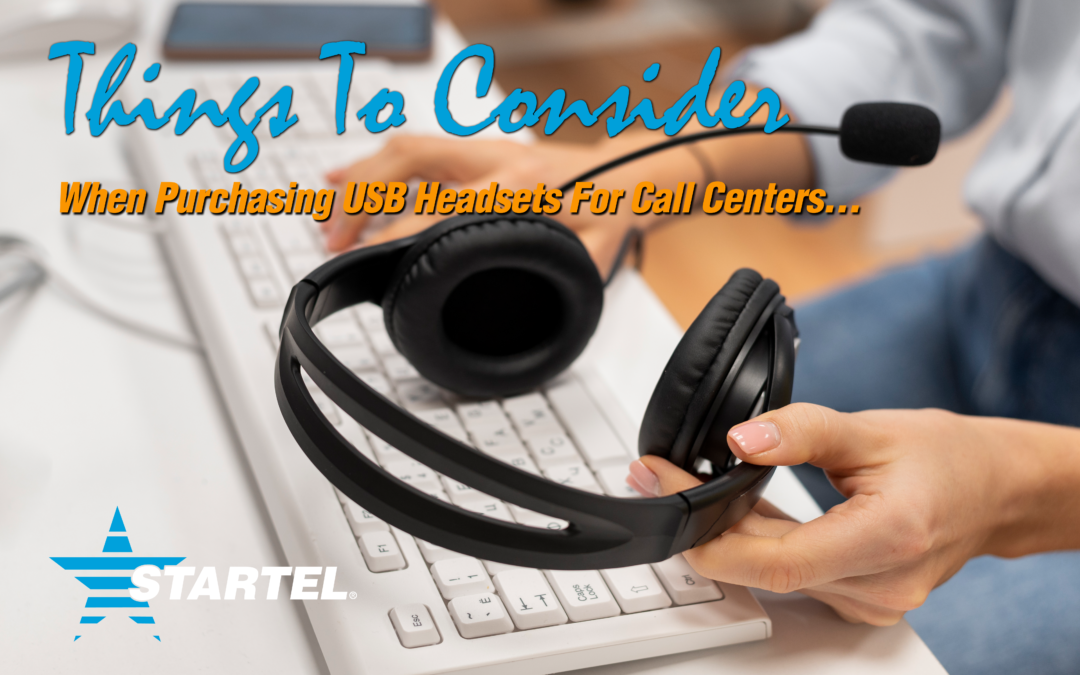Of course, you can ask your colleagues what headsets they prefer in their call center… but the more you know about the features and capabilities of USB headsets, the more impactful your purchase will be. Here is some insight to help guide your purchase:
Initial Considerations
By connecting to your computer or device via USB, the headset receives power and can transmit a signal both ways. Some USB headsets are designed to give you an immersive listening experience, making them well suited to gaming or listening to music. Others are more utilitarian, with compact designs and functional microphones and speakers. USB headphones may have an over-the-ear or on-ear design, and they may have a single speaker for agents to leave one ear open.
There are countless variations and features when it comes to USB headsets.
Just as most people prefer which ear they use when talking on the phone, your contact center agents may prefer the position of the microphone or a one-ear or two-ear headset. Not all headsets have a boom that can rotate to be used on either side.
When shopping for a USB headset for your agents, you need to consider how and where it will be used. Maybe your agent works in a busy office or home and needs a headset that can offer clear audio as it blocks out background noise. The spectrum of USB headsets on the market is wide, and at the end of the day, most models are designed for one specific task. Knowing your needs beforehand can help you narrow your search.
Sound quality
The sound quality of a headset generally correlates to the diameter of the drivers, which can range from 13.5 millimeters to 53 millimeters. For listening to the human voice, as is the case with call center headsets, oftentimes smaller headsets usually work just fine.
Microphone quality
The microphone of a USB headset should be able to pick up your agent’s voice clearly without getting too much background noise. The best microphones are noise-canceling models, with a small microphone on the back of the primary microphone to pick up and reduce background noise. While it’s impossible to entirely block out other sounds, high-quality USB headsets with noise cancelation can allow you to be heard even in a busy office or noisy home.
Monaural vs. binaural
If you want to use your USB headset for phone calls and video chats, you should decide whether a monaural (one-ear) or binaural (two-ear) design is better for your needs. Monaural headsets allow your contact center representatives to hear others in your vicinity without taking off the headset, while binaural headsets are better at keeping agents focused on those they’re listening to and blocking out background noises.
Controls
Almost all USB headsets have controls on the cable or the headset itself, allowing you to easily adjust the volume or mute your mic. But for call center agents, additional features like a quick disconnect button and microphone sensitivity dial can be useful.
USB vs. USB-C
USB-C is a newer variety of USB port/plug that offers faster transfer of data and power. As a result, headsets that connect to your computer or other devices via USB-C typically offer superior sound and recording quality. Keep in mind the USB device you use is relative to the type of USB port a pc is equipped with.
USB HEADSET FEATURES
From the style of the ear cups to the overall design, USB headsets can vary greatly in their features.
Wired vs. Wireless
By opting for a USB headset, you’ve already gone hands-free, but if you purchase a wireless USB headset, you can enjoy maximum freedom and flexibility as you take calls from anywhere near your computer. While wireless models may not match the connection quality of wired models, they do allow more freedom for call center agents.
Over-the-ear vs. On-ear vs. Earbud
Almost everyone has a strong opinion on headphone designs. Some people find the large designs of over-the-ear headphones the most comfortable. These have a plastic band that goes over the head and connects the cushioned ear cups or holds one ear cup in place. Other people prefer on-ear designs, which have a plastic or rubber hook that wraps around your ear to keep a single ear cup in place. Earbuds, which fit inside the ears, generally lack the sound quality of the other types, but they can block out external noises well and are easy to tuck away. The design that’s right for you is a matter of personal preference.
Boom
The small arm that holds the microphone is called the boom, which may be made of metal, sturdy plastic, or flexible material. Flexible booms allow contact center agents to position the mic close enough to your mouth to pick up sound clearly but not so close that it picks up your breathing. Many headsets feature a boom that can be rotated in almost a full circle, allowing you to position the microphone on the left or right side.
Ear cushions
If you plan to wear your headset for extended periods, consider what cushion material you prefer. Uncovered foam is typically the least expensive (and least comfortable) option, while fabric- or leather-covered foam is more pleasant for long hours of listening.
Accessories
While any USB headset includes everything you need to get chatting right out of the box, there are a few common accessories that you may need.
- Ear cushion replacements:Maybe you want backups for when your ear cushions wear out (a common issue with plastic or vinyl ear cups). Or maybe you simply aren’t a fan of the ear cushions that came with your headset. Either way, you may be able to find ear cushion replacements. In most cases, you’ll have to find cushions made by the manufacturer of your headphones.
- Carrying case:If you regularly take your headphones to and from work or your agents are always on the go, you might want to invest in a carrying case to protect your headset. It’s all too easy to damage a headset by cramming it into a backpack or handbag.
- Microphone cover: That little bit of foam that goes over the microphone can go a long way in preventing popping and blocking out unwanted sound. Over time, this can become damaged, but replacements are inexpensive.
CONCLUSION
So, there you have it! Factors you need to consider when buying call center headsets. Remember, the last thing you want is a faulty headset getting in the way of great customer service. Give your agents their best ear forward and enjoy the sound of happy clients.


Recent Comments